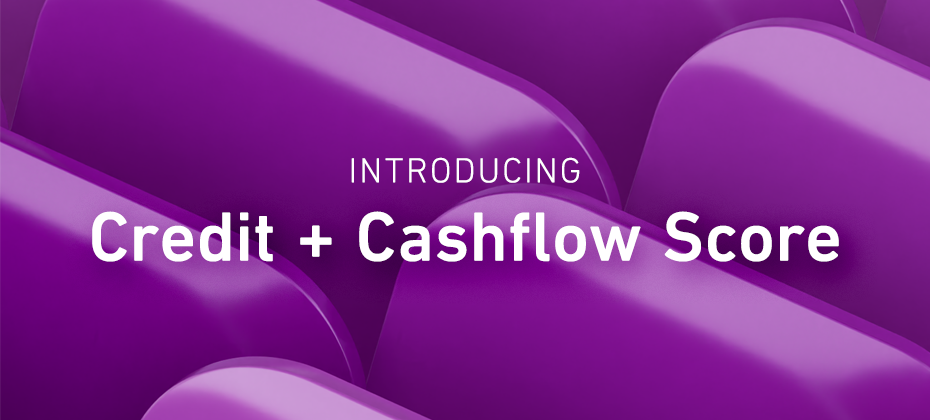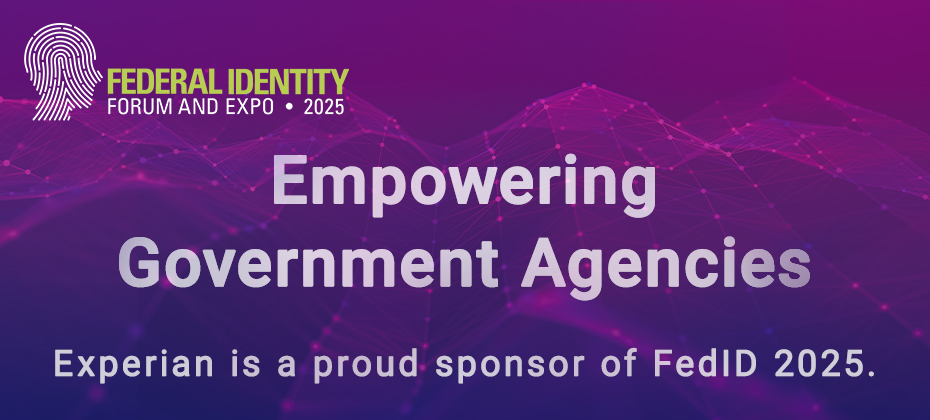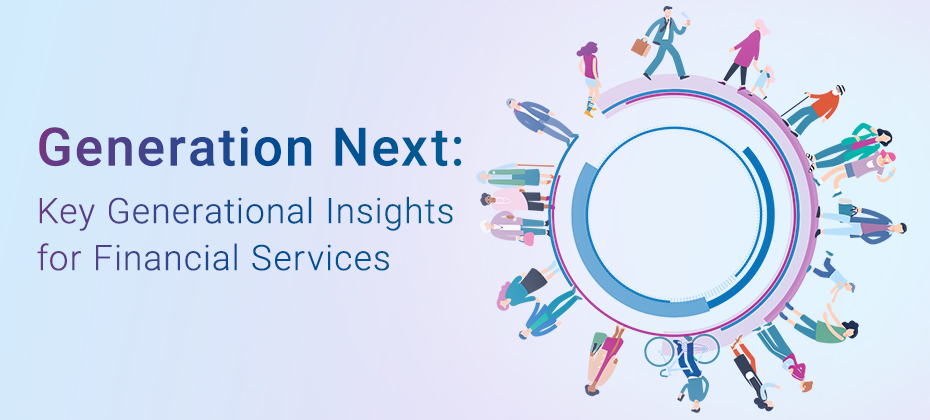Financial Services

Credit marketing is entering a new era of precision. Data privacy, personalization and digital-first expectations are rewriting the playbook for financial services marketers. The winners in 2026 won’t just optimize; they’ll orchestrate, using connected intelligence — the linking of data, AI models and insights across platforms — to find, know and grow the right customers. Our latest checklist breaks down what it takes to compete in this new environment, including how to: Master the new prospecting formula Use data to drive personalization at scale Create cohesive, compliant messaging across channels Whether your focus is to expand your portfolio, deepen existing relationships or improve marketing efficiency, this checklist can help you drive stronger, smarter growth all year round. And if you're interested in diving deeper, register for our upcoming webinar on January 15, 2026 to hear directly from Experian experts. Access checklist Register for webinar

In today’s fast-evolving digital landscape, fraud prevention is no longer a reactive function, it’s a strategic imperative. As financial institutions, fintechs and government agencies face increasingly sophisticated threats, the need for scalable, transparent and AI-powered solutions has never been greater. Experian stands at the forefront of this transformation, delivering proven technology, unmatched data intelligence and regulatory-ready innovation that empowers organizations to stay ahead of fraud. One platform. Every fraud challenge. Experian’s fraud prevention ecosystem delivers scale, speed and sophistication. Unlike fragmented solutions that require patchwork integrations, Experian offers a unified platform that spans the entire fraud lifecycle from identity verification to transaction monitoring and case management. With the exciting acquisition of NeuroID, Experian is delivering more value than ever before with our shared commitment to staying ahead of emerging fraud threats. Embedding NeuroID’s behavioral expertise into Experian’s data systems and platforms is transformative. Together, we’re redefining what fraud prevention can look like in a real-time, AI-driven world. – Kathleen Peters, Chief Innovation Officer, Experian With tools like NeuroID, FraudNet and Precise ID, Experian delivers real-time decisioning and orchestration across diverse use cases. These technologies are not just buzzwords, they’re battle-tested engines driving measurable impact across millions of daily decisions. Data dominance that drives accuracy Experian’s proprietary datasets and global consortia provide unparalleled access to fraud intelligence. This data advantage enables clients to detect anomalies faster, reduce false positives and optimize fraud strategies with precision. Experian supports over five billion fraud events annually across the largest banks, fintechs and government agencies. That’s 10x more fraud and identity use cases than most competitors can manage across industries and institutions of all sizes. AI innovation with guardrails While many vendors are just beginning to explore AI, Experian has spent the last two decades embedding it into its core products and services. The launch of the Experian Assistant for Model Risk Management exemplifies this commitment. Integrated into the Ascend Platform and powered by ValidMind technology, this AI assistant streamlines model governance, enhances auditability, and accelerates deployment, all while remaining compliant with evolving regulations. Experian’s AI is not a black box. It’s explainable, auditable and developed with governance in mind. This transparency gives clients the confidence to innovate without compromising compliance. Compliance is built in, not bolted on Experian’s solutions are designed with compliance at the core. From FCRA and GLBA to KYC and CIP, Experian has a long-standing track record of aligning with regulatory frameworks. The company’s ability to demystify machine learning and make it transparent and explainable sets it apart in an industry where trust is paramount. As AI adoption accelerates, Experian’s governance models ensure that innovation doesn’t outpace accountability. Clients benefit from automated documentation, synthetic data generation and model transparency which are all essential for navigating today’s complex regulatory landscape. Empowering clients to own their outcomes Experian doesn’t just deliver tools, it empowers users. With self-service model building, clients can customize fraud strategies, optimize performance, and respond to threats in real time. This flexibility ensures that organizations aren’t just reacting to fraud, they’re proactively shaping their defenses. Experian’s fraud prevention solutions are designed to be intuitive, scalable, and user-centric, enabling teams to make smarter decisions faster. A global brand you can trust Trust is earned, not claimed. Experian’s decades-long commitment to data stewardship, innovation and client success has made it a globally recognized authority in fraud prevention. With thousands of enterprise clients and strategic partnerships, Experian delivers unmatched reliability and scale. From supporting the largest financial institutions to enabling fintech startups, Experian’s infrastructure is built to manage complexity with confidence. Thought leadership that moves the industry Experian continues to lead the conversation on fraud prevention and identity verification. As a sponsor of the 2025 Federal Identity Forum & Expo, Experian showcased its latest innovations in behavioral analytics and fraud detection, helping government agencies stay ahead of evolving threats. The company’s U.S. Identity & Fraud Report, now in its tenth year, provides actionable insights into shifting fraud patterns and consumer behavior reinforcing Experian’s role as a trusted thought leader. In a market flooded with noise, Experian delivers clarity. Its unified fraud prevention platform, backed by decades of AI innovation and regulatory expertise, empowers organizations to protect their customers, optimize operations, and lead with confidence. Experian isn’t just keeping up with the future of fraud prevention, it’s defining it. Learn more

Every credit decision relies on data, but traditional credit information may capture only part of a consumer’s financial story. Some of that story is reflected in credit reports, the loans repaid, the cards managed, and the steady progress toward financial goals. Others live quietly in bank statements and transaction histories, like the rent paid on time, the savings set aside, and the bills managed responsibly. Yet for millions of consumers, that second story has rarely been part of the credit conversation. Expanding the credit conversation can give lenders and financial institutions an edge, helping them separate genuine risk from missed opportunity. In a lending environment defined by volatility and evolving consumer habits, having a more complete picture of each applicant can help make the difference between sustainable growth and risk management. At the same time, open-banking frameworks and consumer-permissioned data have made it possible to understand financial health more clearly than traditional models. That’s where Experian’s Credit + Cashflow Score comes in. A unified view of credit and cash flow The Credit + Cashflow Score is the first-of-its-kind model combining multiple data sources into a single score. Based on our pre-production analytics, early results demonstrate a 40% improvement in predictive accuracy compared with conventional credit models. It unites our proprietary and industry-leading credit data, alternative credit insights, 24 months of trended behavior, and consumer-permissioned cashflow information into a single score ranging from 300 to 850.* This goes beyond cashflow-augmented models that rely primarily on transaction data layered over credit files. The result is a data-rich assessment of creditworthiness that allows lenders to strengthen portfolio performance, maintain disciplined risk management, and help identify qualified borrowers that traditional credit models might overlook. Better risk control and stronger growth Today’s lending landscape is being reshaped by rising interest rates, increased capital costs, and heightened regulatory oversight. These pressures are prompting institutions to tighten underwriting standards and reassess risk strategies as they navigate an uncertain economy. At the same time, competition for qualified borrowers continues to intensify, creating pressure to drive sustainable growth without compromising credit quality. Meanwhile, on the consumer side, people are earning income through gig work or multiple income streams and using alternative financial products. According to our recent market estimates, 62 million U.S. consumers are thin-file or credit-invisible1. This is making it harder for lenders to assess true financial capacity using credit data alone. Traditional credit scores continue to remain important, but they can potentially miss key indicators of stability and affordability that appear only in transactional data. The Credit + Cashflow Score bridges that gap, helping enable lenders to expand approvals responsibly while maintaining disciplined risk management. See what's next As credit markets continue to evolve, lenders are looking for new ways to balance growth with risk. Having the whole financial picture may allow organizations to grow stronger portfolios, reach more qualified borrowers, and bring financial opportunity to more people. Partner with Experian to leverage decades of credit expertise, the nation’s largest alternative credit bureau, and industry-leading open-banking solutions to help lenders innovate responsibly. The Credit + Cashflow Score is built to deliver measurable performance lift, model transparency, and ease of integration through the Experian Ascend Platform. Learn more about the Experian Credit + Cashflow Score * New score available in pre-production for analytics 1https://www.experian.com/thought-leadership/business/the-roi-of-alternative-data

Debt collection is rapidly evolving. Traditional methods are becoming increasingly ineffective as consumer preferences shift, regulations tighten and operational inefficiencies lead to bottlenecks.Agencies and debt buyers that rely on outdated strategies are experiencing the consequences: lower recovery rates, increased compliance risks and weaker consumer engagement. However, there’s good news — modern tools, powered by advanced data, analytics and digital platforms, are transforming these challenges into opportunities. Common collections challenges: Real-world scenarios In our latest e-book, we examine four fictional scenarios that illustrate how collections teams are addressing today’s primary challenges by updating their methods. Here’s a preview: Smarter segmentation = Higher recovery: Sally, head of collections at Midwest Debt Solutions, realized her team’s one-size-fits-all approach was costing them. By adopting advanced segmentation powered by data and analytics, she shifted her focus from chasing low-value accounts to targeting those most likely to repay, boosting recovery rates and team morale. Better data in, better decisions out: Jerry, a risk analyst at Bay & Associates, relied on a legacy credit model that overlooked crucial alternative signals. By incorporating trended credit data, utility payments and behavioral signals, his team significantly enhanced their prioritization approach and forecasting accuracy. Modern engagement for the modern consumer: John, a collections agent, was having trouble reaching consumers through traditional methods, such as phone calls and letters. With a digital self-service platform, John’s team gained real-time insight into engagement preferences and was able to connect through the channels consumers use, like SMS and email. Personalization at scale: Rachel, an account manager at Union Collections, knew manual processes were slowing her team down. By implementing personalized communications and multichannel outreach, they enhanced consumer experiences, increased repayment rates and minimized compliance risks — all while saving time. Why it matters These scenarios share a common thread: with the right tools, data and strategy, collections teams can turn today’s pain points into measurable progress. At Experian®, we help agencies: Prioritize accounts more effectively with advanced segmentation. Make smarter predictions using dynamic, modern scoring models. Streamline operations with self-service platforms and automation. Strengthen consumer relationships with personalized outreach. Download the e-book Want to dive deeper into each use case? Access the full e-book to learn how forward-thinking agencies are adapting their collections strategies to recover more, spend less and build stronger consumer relationships. Download the e-book

Buy now, pay later (BNPL) has rapidly matured into a $175 billion market in the U.S. alone, according to PYMNTS, reshaping how consumers approach short-term financing. While early BNPL adoption was often associated with younger, higher-risk borrowers, recent data paints a far more nuanced and encouraging picture. Today’s BNPL consumers are showing signs of financial responsibility, planning, and discipline — offering lenders new opportunities to empower financial futures. BNPL adoption is widening Though Millennials and Gen Z remain the largest user base, usage among Gen X and Baby Boomers continues to grow steadily. Between 2021 and 2025, BNPL adoption among Gen X is projected to rise by 13.7%, and by 8.6% for Baby Boomers. According to a Morgan Stanley report, much of this growth is being fueled by the perceived ease and predictability of BNPL terms. In fact, Experian research1 shows 41% of U.S. adults have used BNPL, with nearly half of those users tapping into the service once a month or more. This increased use of BNPL appears to reflect that BNPL has moved from a niche payment option to a mainstream financial tool. The rise of intentional and responsible spending Contrary to outdated perceptions, most BNPL users are not overleveraged impulse spenders. Instead, Experian data shows: 73% of BNPL users report making payments on time and as agreed.2 75% cite convenience and flexible payments as their primary motivations.3 The desire for control and flexibility is a consistent behavioral theme. Investopedia notes that leading BNPL platforms are leaning into this demand by offering budgeting tools and automatic payment reminders. Why this shift matters for lenders When BNPL data becomes available to lenders, the data it generates will offer a powerful lens into consumer behavior. Beyond challenging old assumptions, these insights can be leveraged to strengthen risk assessment, identify new growth opportunities, and serve consumers who may otherwise be overlooked: Enriched credit risk models BNPL payment data can add an additional layer of insight into consumers’ financial health and behaviors. By integrating this information into their underwriting process, lenders can more accurately assess risk. Serving thin-file consumers Thin-file consumers, such as young adults, may often be overlooked by traditional credit models. BNPL data can provide greater visibility into their financial habits, helping lenders expand credit access more equitably and support greater financial inclusion. Evolving with the BNPL consumer Today’s BNPL users are not who they were five years ago. They are increasingly financially literate, focused on credit health and integrating BNPL into everyday budgeting. When BNPL data becomes available, lenders will have a chance to: Sharpen risk models with alternative data Personalize offers with greater precision Expand financial access to underserved groups BNPL users are changing — and lenders who understand this shift will be ready to serve a broader, more responsible borrower base when the data becomes actionable. We continue to work closely with BNPL providers to support expanded data furnishing and bring greater visibility to both consumers and the industry. Visit our webpage to discover the latest insights and developments on BNPL data. Learn more 1-3Experian commissioned Atomik Research to conduct an online survey of 2,005 adults throughout the United States. The margin of error is +/- 2 percentage points with a confidence level of 95 percent. Fieldwork took place between May 15 and May 20, 2025.

Artificial intelligence (AI) is transforming industries worldwide, and financial services are no exception. One of the most impactful applications is AI credit scoring, a modern approach that uses advanced algorithms to assess consumer creditworthiness with precision, fairness and efficiency.AI credit scoring addresses traditional limitations by introducing more advanced, data-driven techniques. Instead of relying solely on static, historical data points, AI models can process vast amounts of diverse information in real time, spotting patterns and predicting behaviors more accurately. How AI is being used in credit scoring Traditional credit scoring has long relied on structured data such as payment history, credit utilization, and length of credit history. While effective, these models can be limited in capturing a holistic view of an individual’s financial behavior. AI credit scoring expands this view by: Leveraging alternative data: AI models can analyze non-traditional data sources such as rental payments, utility bills, and even digital transaction histories, providing a broader perspective for those with limited credit history. Real-time analysis: Machine learning enables lenders to evaluate applicants faster by instantly processing large amounts of data. Pattern recognition: AI systems identify subtle behavioral and financial patterns that may indicate creditworthiness beyond what traditional models can detect. Continuous learning: Unlike static scoring systems, AI-based models may improve over time as they ingest more data and refine their predictions. Using these methods, AI credit score systems create a richer, more nuanced picture of a borrower’s financial health, making lending more inclusive and predictive. The benefits of AI credit scoring The adoption of AI in credit scoring has created significant benefits for lenders, regulators, and consumers alike: Improved accuracy: AI models draw on a broader range of data, reducing reliance on limited or outdated metrics. Financial inclusion: Millions of consumers globally remain outside the traditional credit system. AI credit scoring allows lenders to evaluate previously overlooked applicants, such as young adults, recent immigrants, or gig economy workers. By factoring in alternative data, lenders can serve historically underserved individuals. Faster and more efficient processes: AI can automate large portions of the decision-making workflow, significantly reducing the time it takes to approve applications. This means faster access to credit for consumers and reduced operational costs for lenders. Fraud detection and risk mitigation: Advanced machine learning models can detect anomalies in borrower behavior that may indicate fraud or identity theft. By flagging these risks earlier, lenders protect both themselves and their customers. Enhanced customer experience: AI-driven insights help lenders design more personalized products and repayment plans. Institutions can better understand customer needs and financial behaviors by offering tailored solutions that improve loyalty and trust. Challenges of AI in credit scoring While the promise of AI is transformative, it also brings new challenges that financial institutions must navigate carefully. Bias and fairness: AI models may inadvertently replicate biases in training data, raising concerns about fairness and equity. Transparency: Complex algorithms can be challenging to explain to regulators, lenders, and consumers, creating a "black box" perception. Data privacy: Using alternative data for credit scoring requires strict compliance with privacy regulations and consumer consent. Regulatory alignment: As AI evolves, credit scoring must comply with evolving financial and consumer protection laws. Why partner with us At Experian®, we understand that trust, accuracy, and transparency are essential in the financial ecosystem. By combining decades of expertise in credit data with AI solutions, we deliver AI credit score solutions that empower lenders to make smarter, fairer, and faster decisions. With us as your trusted partner, you can embrace AI-powered credit solutions confidently and responsibly. Global data expertise: We leverage one of the world’s most comprehensive credit databases, ensuring high-quality insights. Responsible AI: Our solutions are built with fairness, transparency, and regulatory compliance at the forefront. Proven results: We partner with financial institutions worldwide to unlock opportunities for lenders and consumers through AI-driven insights. Commitment to inclusion: Our AI credit scoring tools are designed to expand financial access for underserved communities. The rise of AI credit scoring marks a new era in financial services, where accuracy, speed, and inclusivity converge to benefit lenders and consumers alike. While challenges remain, responsible use of AI ensures that credit scoring becomes more transparent, fair, and effective. Learn more

As fraud continues to rise in the rental housing market, tenant screening practices are evolving. In an earlier blog, I explored how Experian Observed DataTM can provide early indicators of income and employment consistency, offering screening companies a way to reduce reliance on costly or time-intensive verification methods. In this follow-up, I explore two additional tools that strengthen the tenant screening process: Experian VerifyTM for Research Verifications and Experian Verify for Permissioned Verification's AI-powered Document Review. Used together, these solutions enable a layered approach that boosts both efficiency and prevention of fraud. Modernized Research Verifications Manual employment and income and employment checks—once the standard for tenant screening—are time-consuming and often inconsistent. Traditionally, screening companies had to reach out directly to employers and request proof of employment. While still useful, this method puts pressure on internal resources and is not always scalable. To streamline manual verification, many organizations are partnering with third-party providers, especially those that take a digital-first approach. Outsourcing allows screening companies to delegate outreach, follow-ups, and fraud detection to specialized teams trained in document validation and employer communication. These services deliver the same insights internal teams would gather, while freeing up in-house resources for more strategic initiatives. By leveraging digital tools such as conversational AI, online forms, and automated workflows—combined with human oversight—digital-first vendors offer a more scalable and cost-effective alternative to fully manual processes. This approach not only reduces operational costs but also shortens turnaround times, helping screening companies respond faster without compromising accuracy or fraud resistance. Key advantages:[MJ1] Reduces the burden on internal staff Ensures consistency and fraud awareness in document review Provides a reliable fallback when other verification tools return limited data This approach is especially valuable when initial data sources yield incomplete results and further confirmation is required. AI-Enhanced Document Upload and Review Another common scenario in tenant screening is the submission of income documents by the applicant, often in the form of paystubs or bank statements. Manual review of these documents is prone to error and increasingly vulnerable to sophisticated forgeries, including those generated by artificial intelligence. AI-powered document analysis tools are now helping screening companies process uploaded documents more securely and efficiently. These platforms typically work by: Allowing applicants to upload documents through a secure portal Using AI to scan for signs of tampering, fabrication, or inconsistency Returning standardized results that are easier to evaluate and compare By automating the detection of anomalies and potential fraud indicators, these tools reduce the workload for staff while improving the reliability of the review process. Benefits include: Faster review and turnaround times Improved fraud detection capabilities Greater consistency across applicants This method is especially useful when traditional employer APIs are unavailable or when screening companies need additional confirmation beyond initial data sources. A Layered Approach to Verification By combining different verification methods, screening companies can design workflows that adapt to a wide range of applicant profiles and risk scenarios. A layered strategy might include: Starting with an inexpensive source of income or employment data to identify likely matches Using AI-based document review when additional validation is needed Turning to manual research verifications only when necessary This cascading process allows screening companies to control costs while maintaining a strong defense against fraud. It also ensures that higher-cost methods are used only when the earlier steps do not provide enough confidence to proceed. Modern Challenges Require Modern Solutions Fraud in tenant screening is increasing rapidly. According to industry surveys, over 93 percent of screening companies have encountered fraud in the past year, and the majority have dealt with falsified income documentation. Traditional approaches, especially manual review, are no longer sufficient on their own. By rethinking verification strategies and incorporating modern tools like outsourced research verification and AI-enhanced document review, screening companies can reduce risk, improve efficiency, and better prioritize their resources. Learn More For organizations interested in implementing these types of verification tools, several providers—including Experian—offer services designed to support this layered approach. These solutions can help screening companies strike the right balance between cost, compliance, and fraud resistance. To learn more, visit experian.com/verify.

In today’s digital payments landscape, fraudsters are constantly developing new tactics to exploit vulnerabilities. One of the most common credit card schemes financial institutions and merchants face are BIN attacks. But what exactly is a BIN attack, and how does BIN attack fraud work? What is a BIN attack? BIN attacks, a type of card not present fraud, target the Bank Identification Number (BIN) — the first six to eight digits of a credit or debit card number that identify the issuing financial institution. Fraudsters use these digits to systematically generate and test potential card number combinations. The goal of a BIN attack is to discover valid card numbers that can be used for fraudulent transactions. Because BINs are publicly available and consistent across card issuers, they provide a predictable framework for attackers. How does it differ from other types of payment fraud? Payment fraud takes many forms, but BIN attacks stand apart because of their scale and automation. Card testing fraud vs. BIN attacks: Both involve criminals running authorization attempts to identify valid card details. However, card testing typically uses data from a single stolen card, while BIN attacks systematically generate thousands of possible card numbers from a known BIN range. Account takeover fraud vs. BIN attacks: In an account takeover, fraudsters gain access to a customer’s existing account, often through phishing or stolen login credentials. BIN attacks don’t require account access — instead, they exploit card number patterns to guess valid accounts. What are the consequences of a BIN attack? BIN attacks don’t just result in stolen card numbers — they create wide-ranging business risks that can impact operations, revenue and customer trust. For financial institutions and merchants, the ripple effects can be significant: High transaction volumes: BIN attacks are carried out using automated scripts or bots that fire off thousands of transaction attempts per minute. This traffic can overwhelm payment systems, slow down processing and disrupt the checkout experience for legitimate customers. Increased chargebacks: Once fraudsters identify valid cards, they make unauthorized purchases that often result in chargebacks. Both merchants and issuers absorb these losses — merchants lose revenue, while issuers reimburse cardholders. Network and processing costs: Every transaction attempt — even those declined during a BIN attack — still incurs network and processing fees. Merchants and issuers can end up paying for thousands of authorization requests, draining resources. Reputational damage: Today’s consumers expect seamless and secure payments. If they experience frequent declines, blocked cards or fraudulent activity, their trust in the institution or merchant erodes. How to protect against BIN attack fraud Mitigating BIN attacks requires a proactive, layered defense strategy. Financial institutions and merchants should consider: Advanced fraud detection and analytics: BIN attacks generate massive volumes of fraudulent traffic. By leveraging AI-driven analytics and machine learning, institutions and merchants can monitor for unusual transaction patterns, velocity spikes and bot-driven activity. Identity and device intelligence: Fraudsters often hide behind bots, stolen IP addresses and compromised devices. With identity verification and device intelligence solutions, merchants and institutions can better determine whether a transaction is coming from a legitimate customer or a fraudster testing card details. Multi-factor authentication (MFA): BIN attacks succeed on speed and automation, firing off thousands of transactions. MFA can help disrupt this process by requiring additional proof of identity from the customer, such as facial recognition or one-time passcodes. Credit card authentication: BIN attacks exploit the gap between payment credentials and the identity of the person using them. A solution like Experian LinkTM seamlessly connects the payment instrument with the digital identity presented for payment, helping merchants to reduce false declines, fraud and operating expenses. Build a stronger defense against BIN attacks BIN attacks are a growing threat in today’s digital payments ecosystem. But with the right safeguards in place, organizations can stay ahead. Learn how Experian can help you strengthen your fraud defenses to reduce losses and protect customer trust. Learn more

Nearly 19 million U.S. households remain unbanked or credit-invisible,1 not due to a lack of financial responsibility but because traditional credit models alone may not include key financial behaviors. These individuals often save, earn and budget wisely, yet conventional scoring systems do not recognize them. We’ve recently partnered with Plaid, the trusted leader in open finance, to change that. Together, we’re putting cash flow underwriting front and center — giving lenders access to real-time, consumer-permissioned financial data that paints a fuller, more accurate picture of creditworthiness. Why cash flow data matters now In the U.S., many consumers with limited credit histories want to build their profiles but don’t know how. Cash flow underwriting bridges this gap. Cash flow insights reveal real-world financial activity — like income patterns, spending habits and account balances — in real time. This empowers lenders to make smarter, faster and more inclusive credit decisions, while helping consumers gain access to the financial services they deserve. What cash flow insights deliver By incorporating cashflow data into your decisioning strategy, you can: See beyond the score with a richer view of a consumer’s financial health. Accelerate approvals with more accurate and timely insights. Expand access to credit while strengthening portfolio diversity and reducing risk. Download our infographic to see how cash flow underwriting is reshaping lending — and how you can lead the change. Download infographic 1Mullen, C. (2024, November 13). Underbanked US population grows to 14.2%, FDIC finds. Banking Dive.

Credit decisioning has traditionally relied on static data like credit bureau scores, income statements, and past repayment history. As financial behavior becomes more dynamic and consumer expectations shift toward instant decisions, real-time data is emerging as a powerful tool in reshaping how lenders assess risk.

Lending fraud – what is it? Lending fraud is a deceptive practice in which individuals or entities intentionally provide false or misleading information during the loan application process to secure credit or financial gain. This can include using fake identities, inflating income, forging documentation, or applying for loans without the intention of repayment. The consequences are significant: lenders suffer financial losses, consumers experience identity theft or damaged credit scores, and the economic system bears increased risk and regulatory scrutiny. Loan fraud is a growing concern across consumer, commercial, and mortgage lending sectors, affecting institutions of all sizes. How do I safeguard my organization from loan fraud? Preventing lending fraud is a complex, ongoing challenge that requires a multi-layered and holistic approach. As fraud tactics become more sophisticated, especially with the rise of generative AI and digital lending channels, financial institutions must continually evolve their defenses. Strong identity verification is the first line of defense. Lenders should implement advanced authentication tools beyond basic KYC (Know Your Customer) checks. This includes biometric verification, document verification, and device intelligence —technologies that assess the authenticity of the user and the device used during the application process. These tools can help detect synthetic identities — false identities created using a blend of real and fabricated information — increasingly used in loan fraud schemes. Another crucial strategy is real-time data analytics and behavioral monitoring. Lenders can quickly identify anomalies that may indicate fraudulent activity by analyzing applicant behavior, credit history, device usage patterns, and geolocation data in real time. For example, if an applicant submits multiple loan applications from different IP addresses in a short time frame, that could raise a red flag for potential lending fraud. Employee training and awareness are also essential. Frontline staff must be equipped to identify warning signs, such as inconsistencies in application documents or rushed, high-pressure loan requests. Regular fraud prevention training helps employees stay alert and aligned with the organization’s risk management protocols. 57% of financial institutions reported direct fraud losses exceeding $500,000 in the past year, with 25% exceeding $1 million.1 Consumers reported losing more than $12.5 billion to fraud in 2024, which represents a 25% increase over the prior year.2 In addition, robust internal controls and auditing mechanisms are critical in prevention. Organizations should regularly audit loan origination processes and investigate unusual approval patterns to detect insider fraud or systemic vulnerabilities. Finally, consumer education is a vital, often overlooked, aspect of combating loan fraud. Lenders should provide resources to help customers understand the risks of identity theft, encourage them to monitor their credit reports regularly, and empower them to report any suspicious activity. A well-informed customer base can be a valuable early warning system for fraud. With digital lending becoming the norm, preventing lending fraud means staying ahead of increasingly tech-savvy fraudsters. Leveraging data, technology, and education together builds a stronger, more resilient fraud defense framework. Lending fraud + Experian – How we can help With access to the industry’s most advanced fraud detection and identity verification tools, partnering with us gives you a potent edge in combating lending fraud. As a global leader in data, analytics, and technology, our comprehensive and accurate sets of consumer information enable you to spot risks that might be invisible through conventional means. Our approach combines rich data insights with powerful machine learning algorithms, delivering fraud prevention tools that are intelligent, scalable, and highly adaptive. Our fraud detection technologies are designed to protect every stage of the lending lifecycle. From real-time identity verification and multi-factor authentication solutions to behavioral biometrics and device intelligence, so you can detect synthetic identities, manipulated applications, and other forms of loan fraud before they lead to financial loss. In an era where trust is currency, partnering with us doesn’t just help protect against lending fraud — it enhances your reputation as a secure, responsible lender. You gain the confidence of your customers by providing safe, streamlined lending experiences while meeting compliance requirements and reducing operational risk. With us, you’re not just reacting to fraud—you’re anticipating it, preventing it, and confidently growing your business. Learn more 1State of Fraud Benchmark Report. Alloy. (2024). 2New FTC Data Show a Big Jump in Reported Losses to Fraud to $12.5 Billion in 2024. Federal Trade Commission. (2025, March 10).

Experian is proud to be a Thought Leadership Sponsor at this year’s Federal Identity Forum & Expo (FedID)! We’re bringing the latest innovations in fraud prevention, identity verification, and behavioral analytics – all designed to help government agencies protect access, ensure trust, and stay ahead of evolving threats.

Risk management specialists, marketing departments, and customer success teams often work from different data sets, leading to inconsistent insights and missed opportunities. A unified data strategy can help break down these silos and unlock the full potential of an organization’s ability to turn raw data into actionable insights.

Collaboration between financial institutions and tech companies is essential to stay competitive and enhance the consumer experience.

Understanding generational trends and preferences is more crucial than ever, especially for the financial services industry.